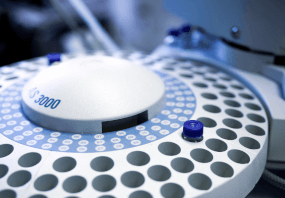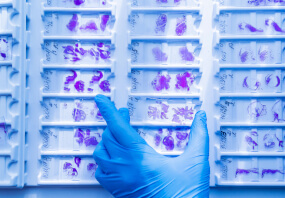Protein Purity≥85% by SDS PAGEExtinction CoeffA280 nm = 0.994 at 1.0 mg/ml for pure C3Molecular Weight175,000 Da (2 chains)General DescriptionMouse C3b is derived from native purified mouse C3 upon cleavage and release of C3a with the alternative pathway C3 convertase. C3 is central to the activation of all three pathways of complement activation (Law, S.K.A. and Reid, K.B.M. (1995)). Initiation of each pathway generates proteolytic enzyme complexes (C3 convertases) which are bound to the target surface. These enzymes cleave a peptide bond in C3 releasing the anaphylatoxin C3a and activating C3b. For a brief time (~60 µs) this nascent C3b is capable of reacting with and covalently coupling to hydroxyl groups on the target surface. Carbohydrates are the favored target, but protein hydroxyls and amino groups also react. This process of tagging the target surface with C3b is called opsonization. The reactive site in nascent C3b is a thioester (Tack B.J., et al. (1980); Pangburn M.K. and MüllerEberhard H.J. (1980)) and C3b is linked to the target through a covalent ester bond (an amide bond is formed if C3b is attached to amino groups). Most of the C3 activated during complement activation never attaches to the surface because its thioester reacts with water forming fluid phase C3b which is rapidly inactivated by factors H and I forming iC3b. Surface-bound C3b is necessary in all three pathways for efficient activation of C5 and formation of C5b-9 complexes that lyse the target cell membrane. Surface-bound C3b and its breakdown products iC3b and C3d are recognized by numerous receptors on lymphoid and phagocytic cells which use the C3b ligand to stimulate antigen presentation to cells of the adaptive immune system. The end result is an expansion of target-specific B-cell and T-cell populations.Physical Characteristics & StructureMouse C3b is composed of two disulfide-linked chains. Analysis of purified mouse C3b by SDS/polyacrylamide gel electrophoresis under non-reduced conditions shows the mobility of mouse C3b to be similar to that of human C3b (176,000 daltons). Under reduced conditions, the migration of the alpha prime chain (α’-chain) of mouse C3b is similar to that of human C3b alpha prime chain (101,000 daltons) while the beta chain migrates as a 62,000 dalton band versus the human C3b beta chain (75,000 daltons).The concentration of purified mouse C3b is determined by using the calculated extinction coefficient of mouse C3 based on its amino acid sequence using ProtParam and assumes all pairs of Cys residues form cystines (i.e. a pair of cystine molecules are joined by a disulfide bond).FunctionThe biological functions of C3 are described above in the General Description section.Precautions/Toxicity/HazardsThis protein is purified from animal plasma/serum and therefore precautions appropriate for handling any animal blood-derived product must be used.ReferencesLaw, S.K.A. and Reid, K.B.M. (1995) Complement 2nd Edition (ISBN 0199633568) Oxford University Press, Oxford.Tack BF, Harrison RA, Janatova J, Thomas ML, Prahl JW. (1980) Evidence for presence of an internal thiolester bond in third component of human complement. Proc Natl Acad Sci U S A. 77:5764-8.Pangburn M.K. and Müller-Eberhard H.J. (1980) Relation of putative thioester bond in C3 to activation of the alternative pathway and the binding of C3b to biological targets of complement. J Exp Med. 152:1102-14.Van den Berg, C.W., Van Dijk , H. and Capel, P.J.A. (1989). Rapid isolation and characterization of native mouse complement components C3 and C5. J. Immunological Methods. 122:73-78. Specification: 1.0 mg/mL, 0.22 µm filtered
- UPC:
- 12352204
- Condition:
- New
- Availability:
- 8-12 weeks
- Weight:
- 1.06 Ounces
- HazmatClass:
- No
- WeightUOM:
- LB
- MPN:
- C414546-100μg
- Product Size:
- 100μg















